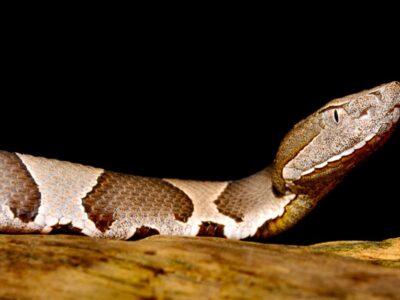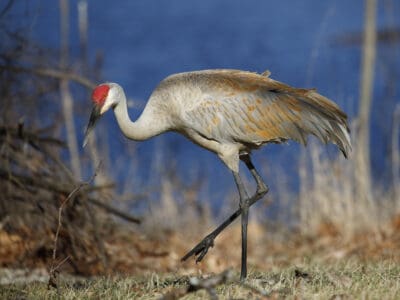There are fantastic opportunities to see rare, strange, and native animals in their native habitats at the Great Smoky Mountains National Park, numerous state parks, wildlife management areas, and zoos in Tennessee. There are more than 75 species of mammals, including many native ones, in the state, including black bears, elk, cougars, and bobcats. You may also see strange creatures, like the American beaver, American mink, and big brown bats.
The Official Animals of Tennessee
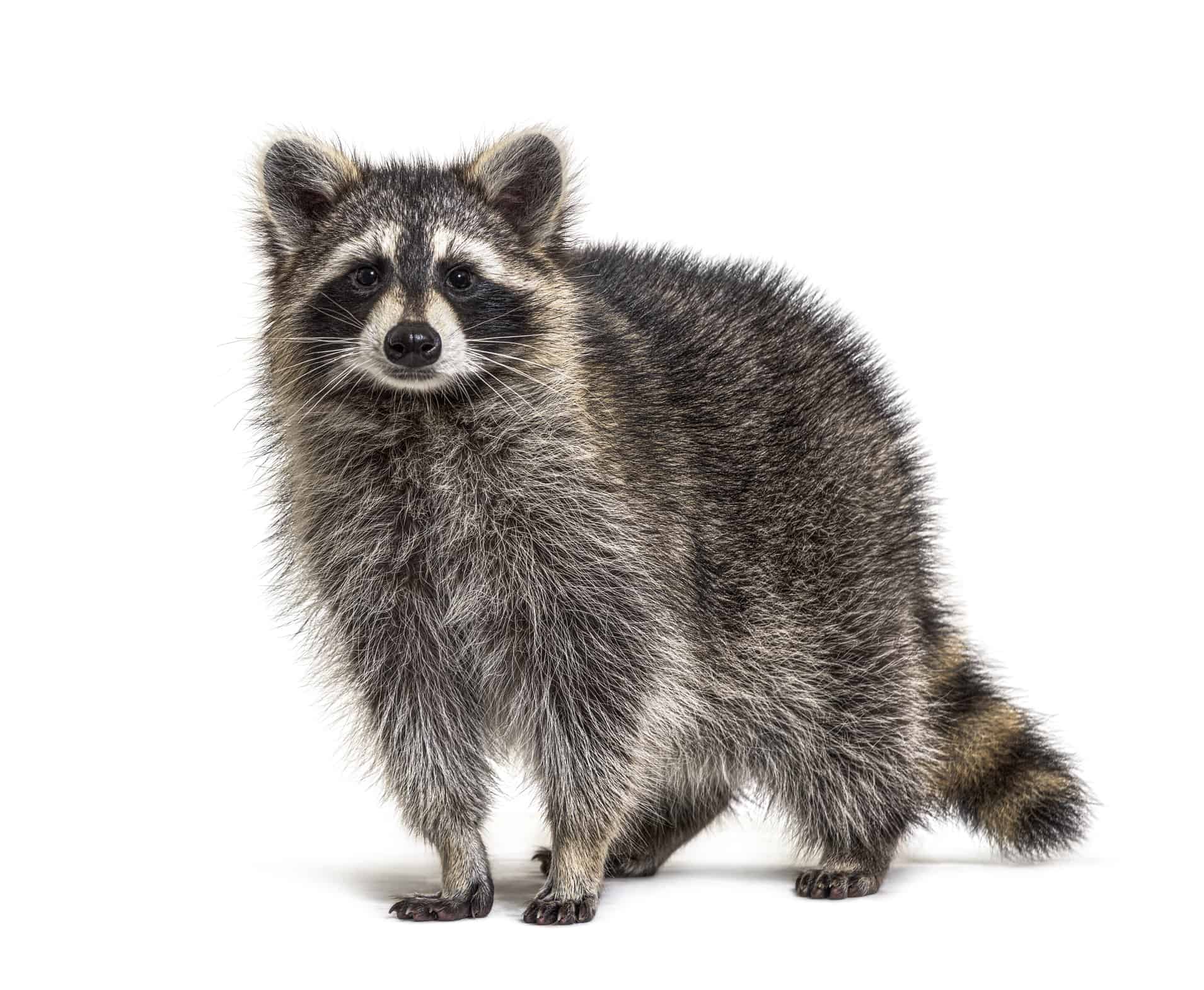
The raccoon is the official wild animal of Tennessee.
©iStock.com/GlobalP
The raccoon is the official wild animal of Tennessee. Besides Tennessee, these furry creatures live in many other areas globally, including North America, Europe, and Japan. These mammals are often considered strange because of the unique black circles around their eyes.
Tennessee has two official state fish. The official sports fish is the smallmouth bass. In addition to Tennessee, smallmouth bass can be found in many U.S. states and Canada.
The official commercial fish of Tennessee is the channel catfish. Catfish live on every continent in the world, except Antarctica. It is considered commercial fish because they are raised on farms in the state and shipped worldwide.
The official horse of Tennessee is the Tennessee walking horse. This breed was developed in the center part of Tennessee about 1790.
Tennesse has three state insects. They are the lightning bug, ladybug, and honey bee. The zebra swallowtail is the state butterfly.
The state amphibian is the Tennessee cave salamander. The IUCN lists this species as threatened because of habitat destruction.
The state reptile is the Eastern Box Turtle, Terrapene carolina. Small (less than six inches), this turtle has a black or brown shell with yellow, orange, and red spots. It may live 30-60 years but seldom goes far from its birthplace.
The state bird is the mockingbird. Most mockingbirds are shades of gray with accents of white. They are all proficient singers, mastering the songs of other birds and composing tunes of their own — thus the name. They are also aggressive fighters.
Where To Find The Top Wild Animals
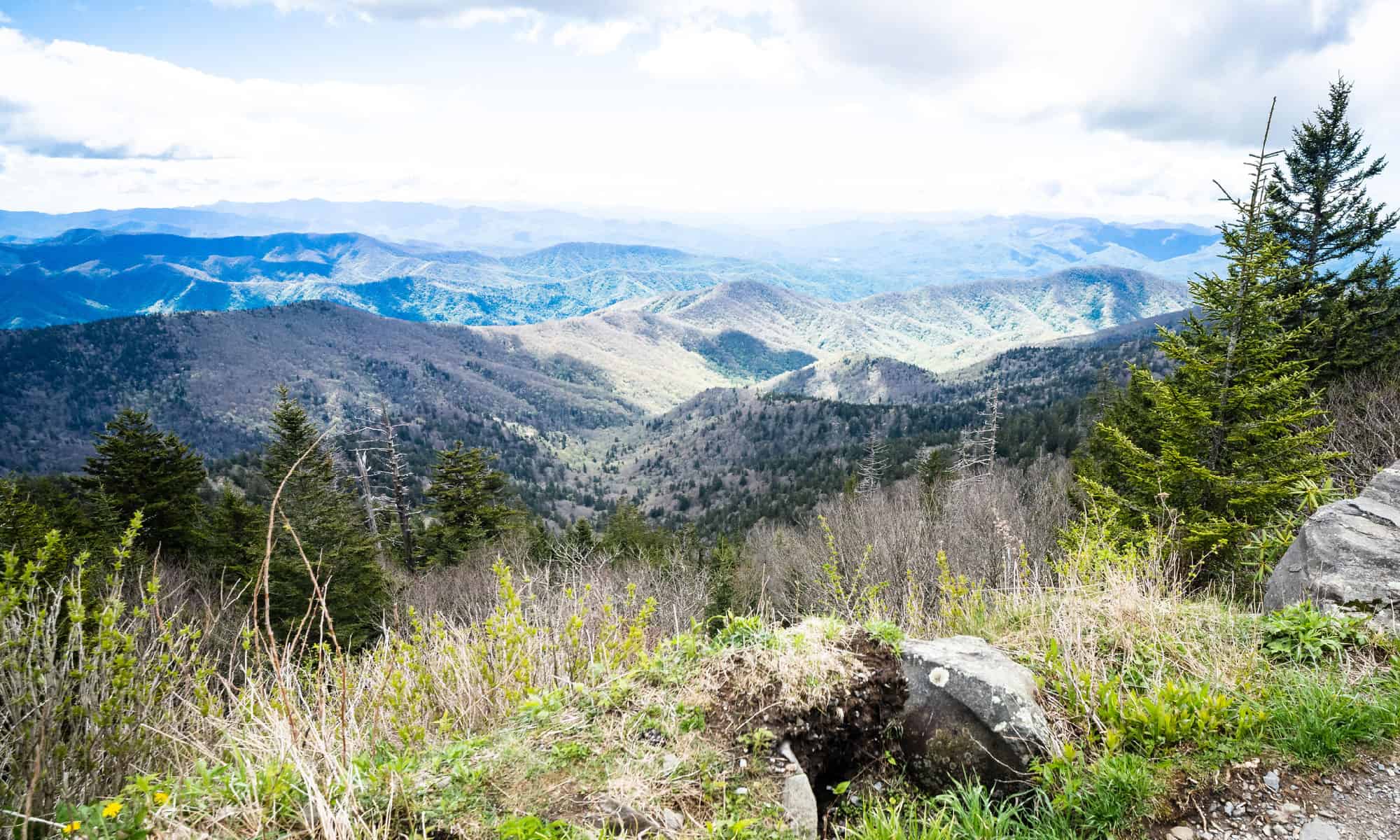
Clingmans Dome is one of the spectacular views in the Great Smoky Mountains National Park, home to many of the state’s wild animals..
©iStock.com/Sam Fowler
Tennessee’s state and national parks are great places to see wild mammals, insects, and reptiles in Tennessee. Over 84 areas have been set aside in the state as natural areas, and they can be great places to see wildlife, including black bears, badgers, cougars, deer, and bobcats. Most wild creatures in Tennessee are not dangerous. Many species of hawks can be found in Tennessee too.
Another great option is to go to the Great Smoky Mountains National Park. While you may see some badger and bobcat tracks if you go hiking or biking, there are unique opportunities at this park to see rare creatures. Wildlife officials estimate that there are two bears per square mile of this park. In addition, you may see other creatures, including white-tailed deer, black bears, raccoons, wild turkeys, and woodchucks.
Many species of spiders can also be found in the state of Tennessee, and they all have fascinating names: Ravine Trapdoor, Arrowhead, Spruce-Fir Moss, Dark Fishing, White-Banded Crab, Canopy Jumping, Tiger Wolf, Southern Black Widow, Furrow, and Southeastern Wanding Spider.
Besides the Great Smoky Mountains, other places you may want to see wild animals include:
- Ijams Nature Center
- Cumberland Mountain State Park
- Bays Mountain Park and Planetarium
- Savage Gulch State Natural Area
- Cedars of Lebanon State Park
- Sugarlands Valley Nature Trail
- Dollywood (Wings of America Birds of Prey) educational show and rescue center.
Tennessee has nine states parks in the Nashville area, so there are many opportunities for outdoor activities even for the people in its biggest city. Tennessee is also home to a diverse range of cold-hardy trees and wildlife, many of which are adapted to the state’s varied climate and landscapes. Check out the coldest place in Tennessee.
Zoos

There is a new
Sumatran Tiger
exhibit at the Nashville Zoo.
©Monka Betley, CC BY-SA 3.0, via Wikimedia Commons – Original / License
A great way to see wild creatures in Tennessee is to visit zoos. You are likely to see creatures from nearby, like bobcats and badgers, along with ones from far away, like penguins and zebras. You can see rare ones that are hard to see in the wild by visiting zoos. Consider visiting these zoos where you can see a variety of creatures from mammals to rodents:
- Nashville Zoo
- Chatanooga Zoo
- Zoo Knoxville
- Memphis Zoo
- African Safari Wildlife Park
- The Elephant Sanctuary in Tennessee
- Smoky Mountain Deer Farm & Exotic Petting Zoo
In addition to zoos, Tennessee is also home to five world-class aquariums including Tennessee Aquarium in Chattanooga and Ripley’s Aquarium of the Smokies in Gatlinburg.
Most Dangerous
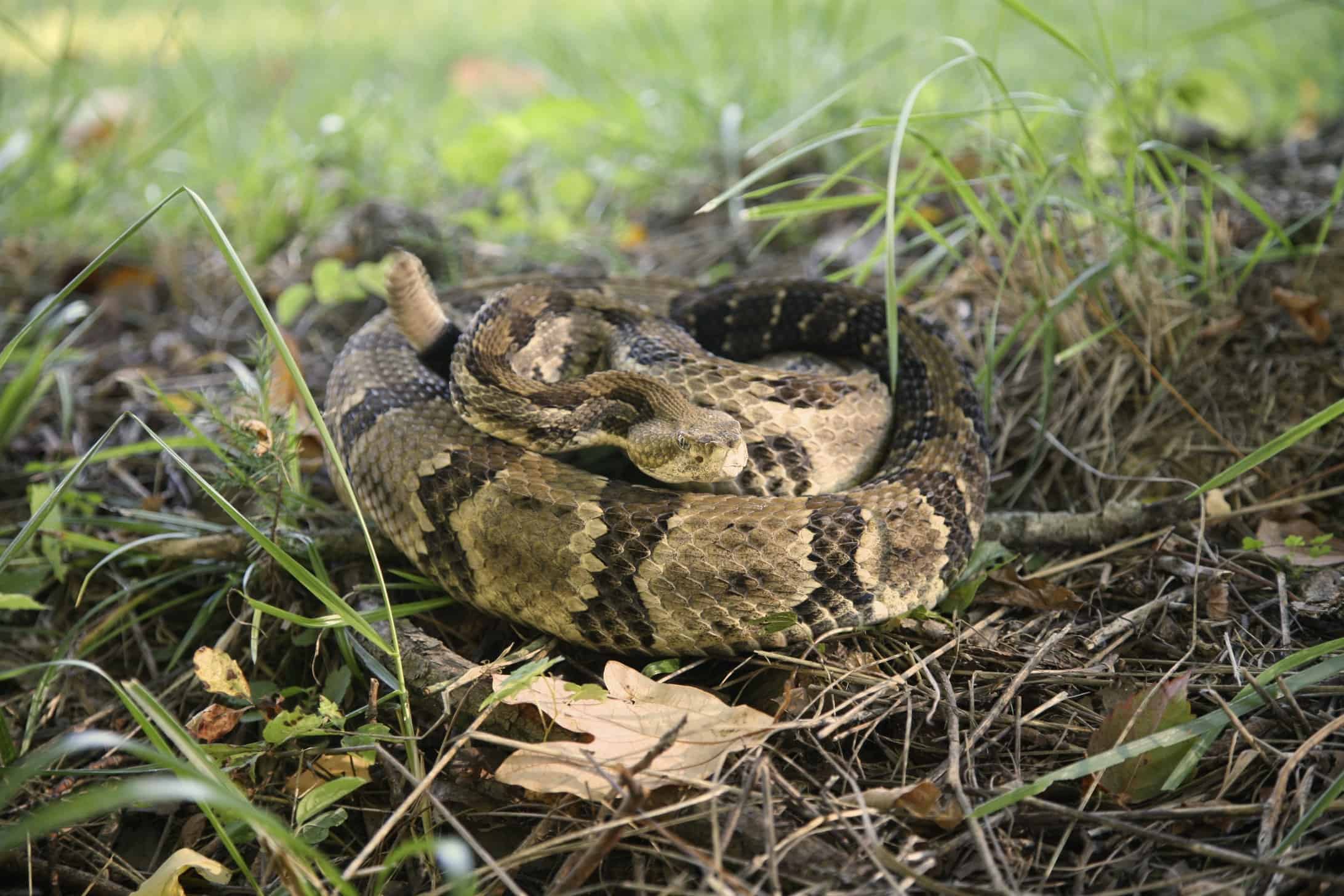
Timber Rattlesnakes, found in Tennessee, are extremely venomous, but they are not typically aggressive.
©iStock.com/NajaShots
The most dangerous animal in Tennessee today is the dog. Approximately 292 dog bite claims each year.
Most snakes in Tennessee are beneficial, but four species of snakes are venomous. They are the timber rattlesnake, pygmy rattlesnake, cottonmouth, and copperhead. Ratsnakes can be found in Tennessee, but they are not venomous.
People can have deadly encounters with black widows and brown recluse spiders. For information on the differences between black widow and brown recluse spiders, click here.
There are also dangers posed by large animals such as the black bear, elk, or wild boar. However, encounters with these animals are rare, and none will attack unless provoked.
Endangered Animals
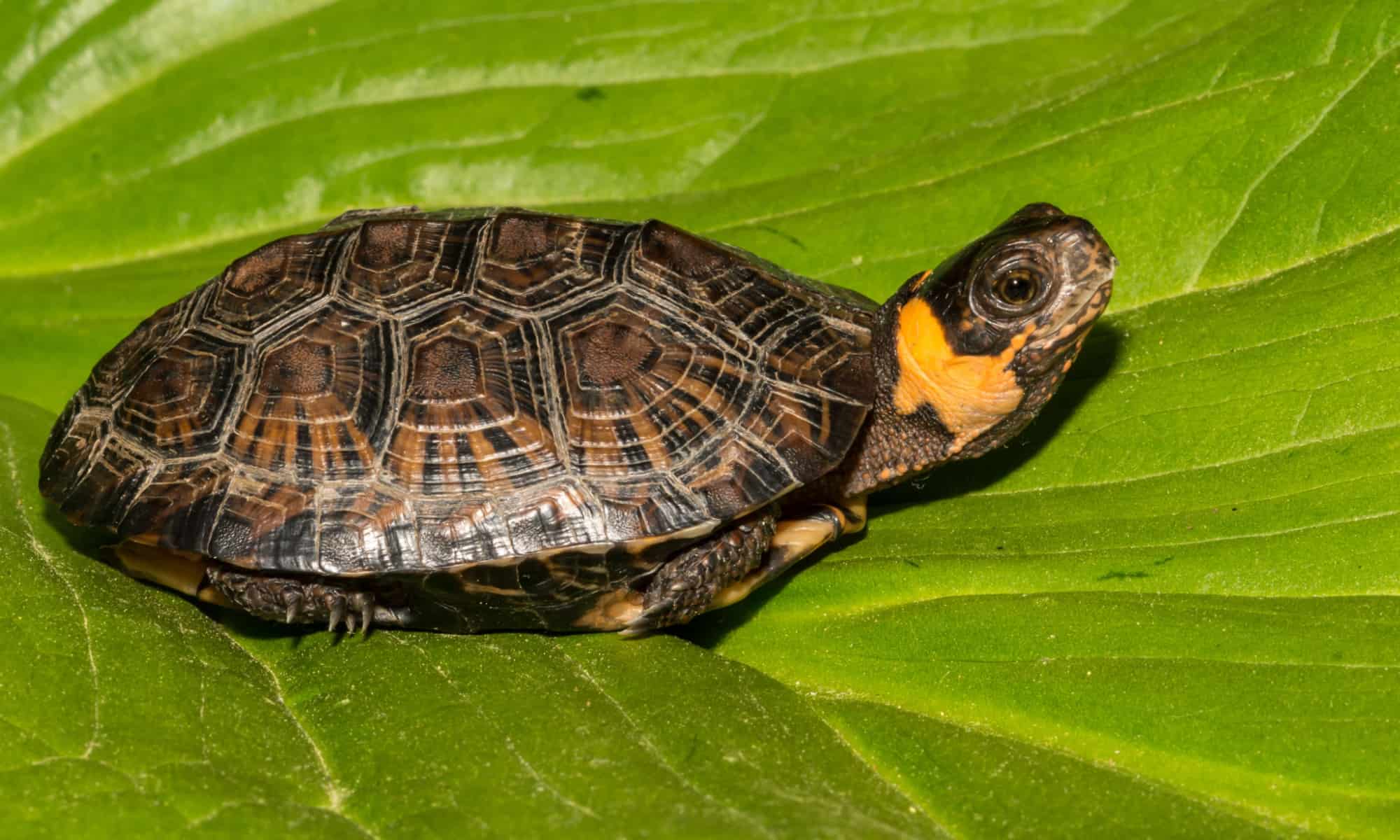
The smallest turtle in North America needs mountain bog ecosystems to thrive, but drought has taken many wetlands in Tennessee.
©Jay Ondreicka/Shutterstock.com
While there are many common wild animals in Tennessee, there are others that are endangered. Be sure to do everything that you can to help protect the approximately 40 species of endangered animals that live in the state. Endangered animals living in Tennessee include:
- Piping plovers – This small gray-and-white bird migrates through the state occasionally on its route from the Great Lakes Region to the Gulf Coast.
- Freshwater mussels – At least six species of freshwater mussels that live along the Tennessee River are endangered.
- Pygmy madtom – The pygmy madtom is a rare fish, which is the smallest member of the catfish family.
- Indiana bats – These small mammals live in caves.
- Gray bats – These mammals that measure about 5 inches in length and have an 11-inch wingspan live in caves are endemic to the U.S.
- Carolina Northern flying squirrel – These endangered rodents grow to be about 12-inches long. These rodents live on the highest peaks of the Appalachian Mountains. These rodents eat lichen, fruit, and nuts.
- Appalachian Elktoe — Also struggling because of water pollution and a lack of a healthy fish population for food, this bivalve is only 4 inches long. It lives just in Tennessee and North Carolina.
- Finelined Pocketbook — A bivalve similar to the Appalacian elktoe, it may no longer have a stable population anywhere but used to thrive in river runoff areas of Georgia, Tennessee, and Alabama.
- Bog Turtle — The smallest turtle in North America at about 4.5 inches, it is dying out because it needs mountain bog ecosystems, which in Tennesse have disappeared due to drought.
Rarest
Obey Crayfish – Classified as Cambarus obeyensis, the Obey crayfish is critically endangered and only found in Tennessee. Petite and rusty orange in color, Obey crayfish are named after the only place they are found: the Obey River in Tennessee. This particular state plays host to a number of crayfish species, some of which are also endangered. Water pollution, nearby developmental runoff, and drought conditions are all threats to the Obey crayfish.
Largest
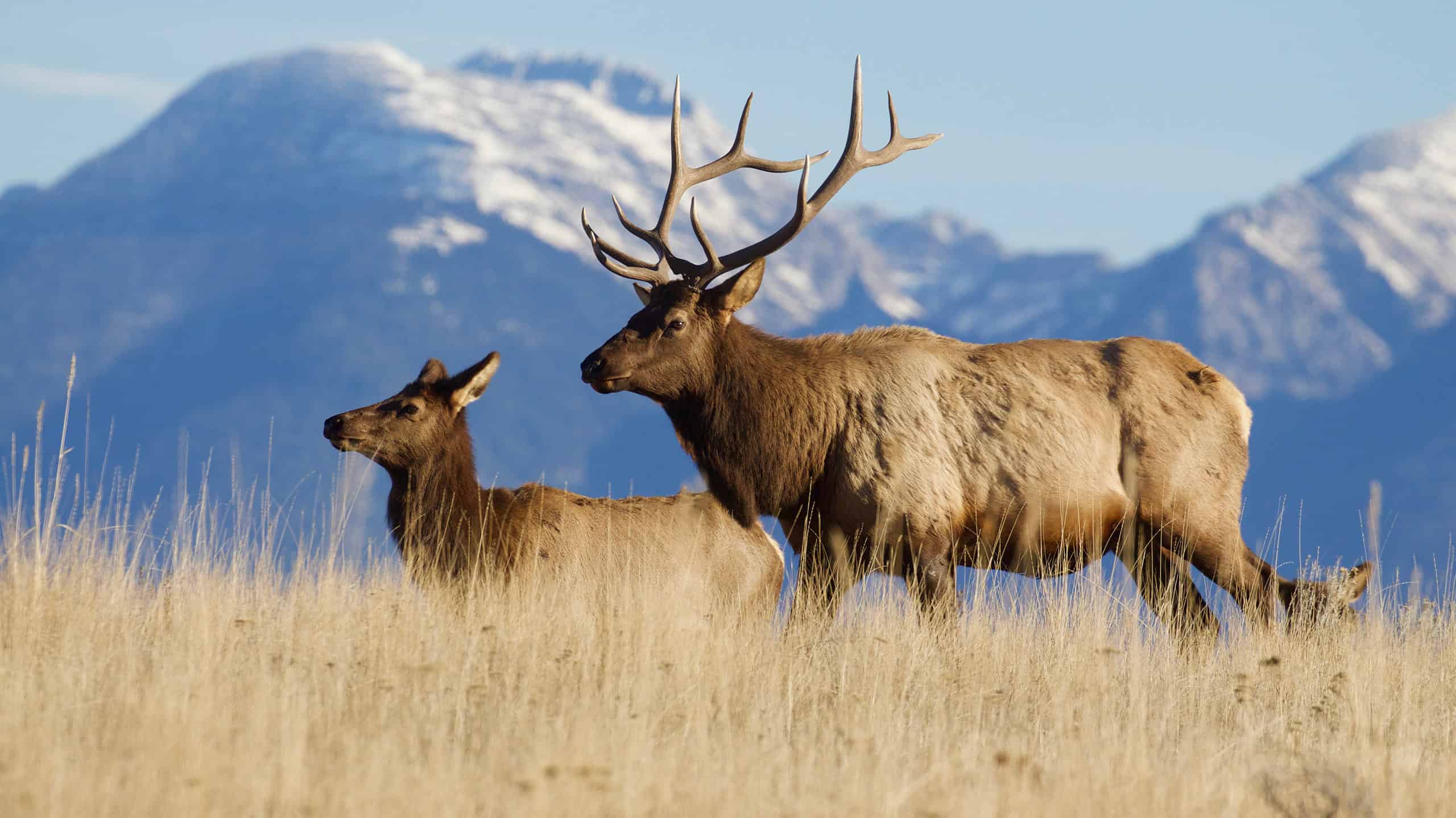
The American Elk is one of the largest animals in Tennessee.
©Tom Reichner/Shutterstock.com
The black bear, elk, and wild board are on the list of most dangerous animals in Tennessee mainly because of their size. They are probably the three largest animals in the state, but you can add the sandhill crane, the bobcat, the American beaver, the raccoon, the muskrat, and the milk snake.
Flag

The state flag of Tennessee symbolizes the unity of its different regions.
©iStock.com/Kamlesh Suthar
The flag of Tennessee is filled with rich meaning. The state flag’s stars represent East Tennessee, Middle Tennessee, and West Tennessee symbolizing unity among all Tennessee’s people. The blue circle signifies that the state’s unity can never be broken.
Native Plants

The showy petals of the native spurred butterfly pea make it a favorite of photographers who visit Tennessee.
©Doikanoy/Shutterstock.com
The state of Tennessee is part of the temperate deciduous forest biome. More than half of the state’s territory is covered by forests, indicating that Tennessee is abundant in trees, shrubs, and vines. Some native plants in Tennessee include the sweetgum, eastern redbud, pecan, American yellowood, and Fraser fir trees. Other plants of note are the Carolina Rose, Spurred Butterfly Pea, Carolina All Spice, Virginia Chain Ferm, and the American beautyberry. For a full description of these plants, click here.
More Articles Related to Tennessee
Read about:
- extinct animals that lived in Tennessee.
- fastest animals in Tennessee.
- ticks in Tennessee.
- snakes of the Tennessee River.
- the biggest fish in Tennessee.
- incredible waterfalls in Tennessee.
- the most stunning waterfalls in East Tennessee.
- the best dog parks in Nashville, Tennessee.
- the most awe-inspiring waterfalls in Gatlinburg, Tennessee.
- the most picture-perfect waterfalls in the Smoking Mountains.
- the best fishing spots in Tennessee in the summer.
- the best fish to catch in Tennessee in the summer.
- the best places to camp in Tennessee in the summer.
Tennessean Animals

Admiral Butterfly
Stunningly beautiful wings
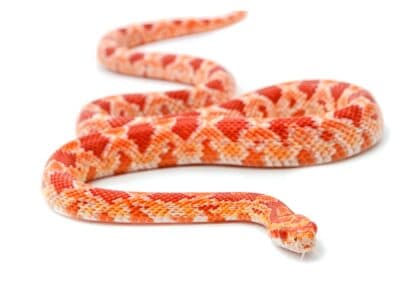
Albino (Amelanistic) Corn Snake
Albino corn snakes make great beginner snakes.

Armyworm
They are so named because they "march" in armies of worms from one crop to another in search of food
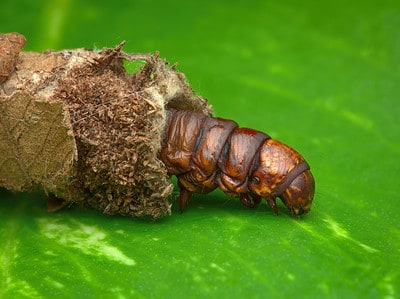
Bagworm Moth Caterpillar
They continually enlarge their protective cases

Banded Water Snake
Some water snakes defend themselves violently.

Beewolf wasp
They hunt bees
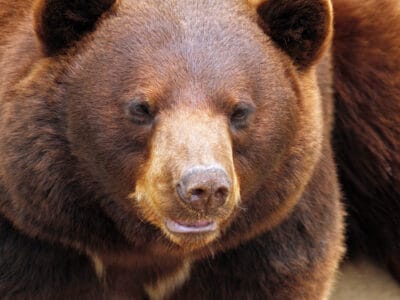
Cinnamon Bear
A newborn cinnamon bear weighs 1/2 pound -- about the same as a large apple.

Common Yellowthroat
The Common Yellowthroat stays close to the ground and uses stealth to survive!
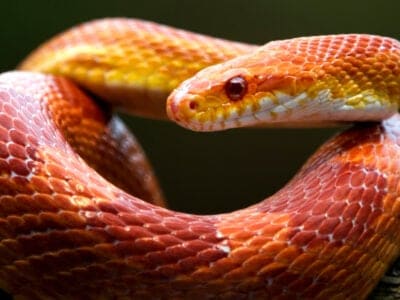
Corn Snake
Corn snakes are partly arboreal and are excellent climbers.
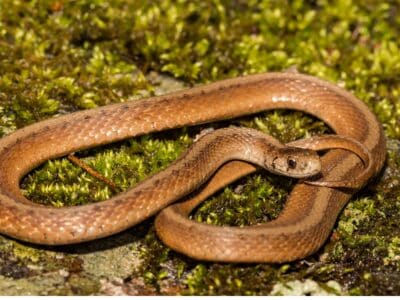
De Kay’s Brown Snake
They have specialized jaws for removing snails from shells.

Eastern Box Turtle
When injured or damaged, the shell of the eastern box turtle can regenerate
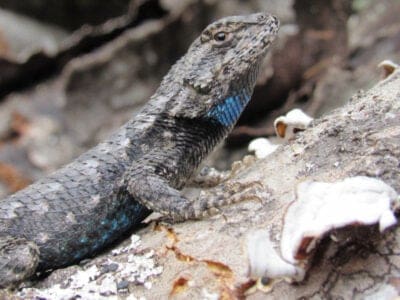
Eastern Fence Lizard
Females are usually larger than males.
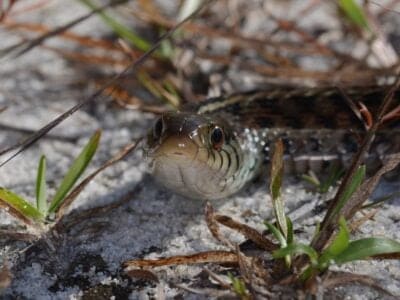
Eastern Glass Lizard
When the glass lizard loses its tail it can grow another one. But the new tail lacks the markings of the old one and is usually shorter.

Eastern Hognose Snake
Eastern hognose snakes are venomous, but only to frogs and toads.

Fainting Goat
Frightening this goat will cause it to fall over in fear!

Flea
Adult fleas can jump up to 7 inches in the air
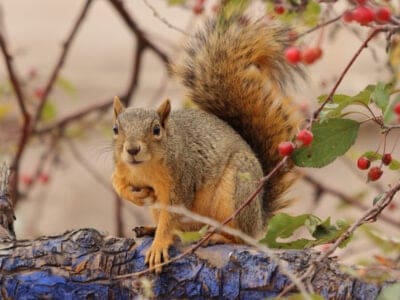
Fox Squirrel
Although it is a tree squirrel, it spends most of its time on the ground.

Groundhog (Woodchuck)
They whistle to each other to warn of approaching danger!

Jackrabbit
They can run as fast as 45 mph.

Kentucky Warbler
The Kentucky Warbler appears to wear bright yellow cat-eye glasses!
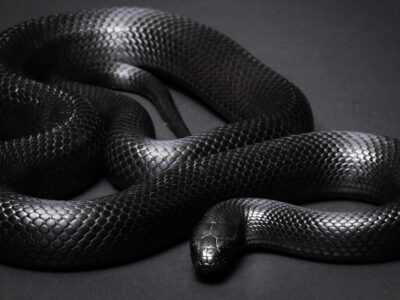
King Snake
King Snakes eat other types of snakes.

Mealybug
They have a symbiotic relationship with ants.

Mockingbird
Mockingbirds are incredible mimics that can learn hundreds of songs!
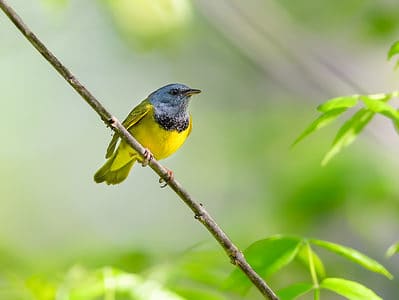
Mourning Warbler
The Mourning Warbler was named for its gray head, which resembles a mourning veil!
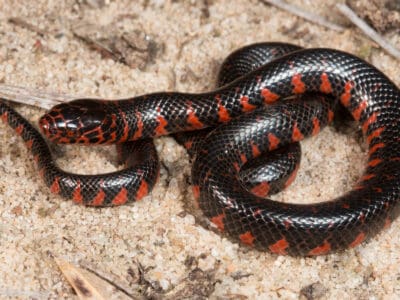
Mud Snake
Mud snakes can lay over 100 eggs at a single time!

Nematode
Nematodes range in size from 1/10 of an inch to 28 feet long

Orb Weaver
Females are about four times the size of males

Owl
The owl can rotate its head some 270 degrees
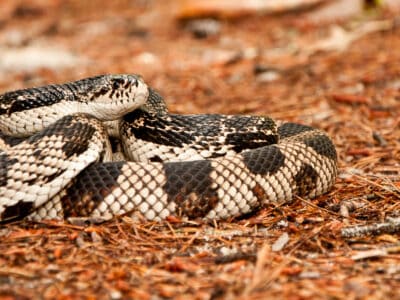
Pine Snake
Pine snakes bluff with the best, trying to scare you away.
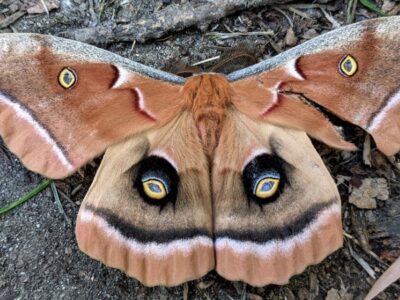
Polyphemus Moth
The Polyphemus moth doesn’t and can't eat, except when it's a caterpillar!

Pygmy Rattlesnake
Pygmy rattlesnakes’ rattle is so small it can only be heard from about three feet away.
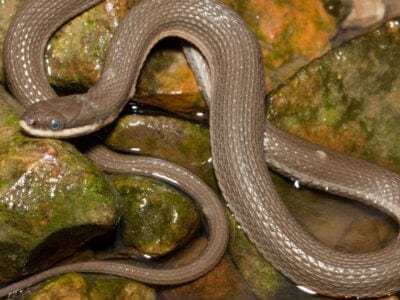
Queen Snake
Queen snakes have armor-like scales on the top of their head

Rat Snakes
Rat snakes are constrictors from the Colubridae family of snakes.
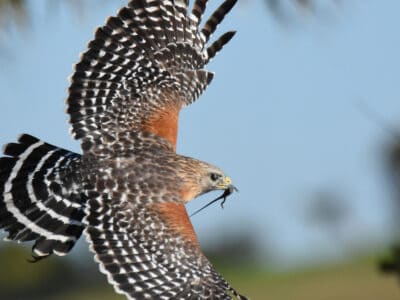
Red-Shouldered Hawk
Red-Shouldered Hawks reuse the same nesting area each year.

Rooster
Will mate with the entire flock!

Rough Earth Snake
It has a pointed snout that is uses to burrow into moist soil.
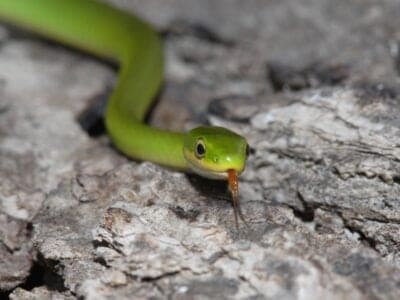
Rough Green Snake
Rough green snakes are great pet snakes because they're low-maintenance.
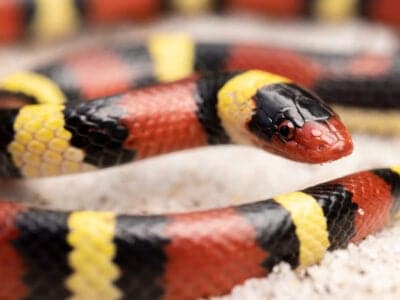
Scarlet Kingsnake
Scarlet kingsnake’s pattern is an example of Batesian mimicry.

Smokybrown Cockroach
Has up to 45 eggs per egg case
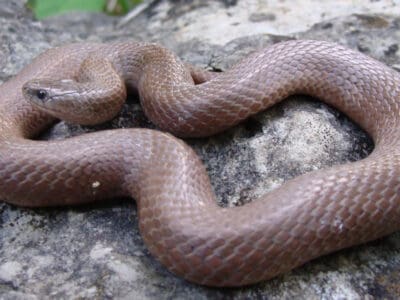
Smooth Earth Snake
Valeria Biddle Blaney (1828-1900) collected the first specimen in Maryland.

Southern Black Racer
These snakes live underground, beneath piles of leaf litter or in thickets, and they are expert swimmers.

Tree Cricket
They make music with their wings
Tennessean Animals List
- Admiral Butterfly
- Agkistrodon Contortrix
- Albino (Amelanistic) Corn Snake
- Armyworm
- Bagworm Moth Caterpillar
- Banded Water Snake
- Beewolf wasp
- Cinnamon Bear
- Common Yellowthroat
- Corn Snake
- De Kay’s Brown Snake
- Eastern Box Turtle
- Eastern Fence Lizard
- Eastern Glass Lizard
- Eastern Hognose Snake
- Fainting Goat
- Flea
- Fox Squirrel
- Groundhog (Woodchuck)
- Jackrabbit
- Kentucky Warbler
- King Snake
- Mealybug
- Milk Snake
- Mockingbird
- Mourning Warbler
- Mud Snake
- Nematode
- Orb Weaver
- Owl
- Pine Snake
- Pine Snake
- Polyphemus Moth
- Pygmy Rattlesnake
- Queen Snake
- Rat Snakes
- Red-Shouldered Hawk
- Rooster
- Rough Earth Snake
- Rough Green Snake
- Sandhill Crane
- Scarlet Kingsnake
- Smokybrown Cockroach
- Smooth Earth Snake
- Southern Black Racer
- Swallowtail Butterfly
- Tree Cricket
- Yellowish Cuckoo Bumblebee (formerly Fernald’s Cuckoo Bumblebee)
Animals in Tennessee FAQs (Frequently Asked Questions)
What Kind of Animals Live in Tennessee?
Many different types of animals live in Tennessee. Depending on where you are, you may see bobcats, bears, red-and-gray foxes, coyotes, elk and deer. You may also see a variety of farm animals, like cows, pigs and horses. You may also find animals, like dogs and cats, living inside Tennessee homes.
What is the Most Dangerous Animal in Tennessee?
The most dangerous animal living in Tennessee is the dog because of the number of dog bites. There are also four species of snake and two species of venomous spiders
Are There Wolves in Tennessee?
No, there are no wolves in Tennessee. Historically, the only wolf to have lived in Tennessee is the red wolf. You may be able to see wolves in Tennessee zoos.
Are Grizzly Bears in Tennessee?
No, there are no grizzly bears outside of zoos in Tennessee. The black bear is the only known bear species in the state.




